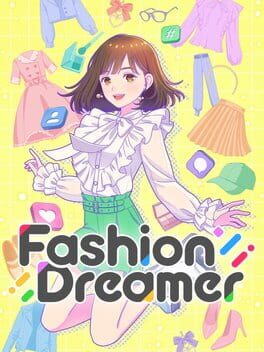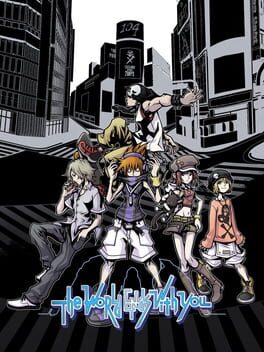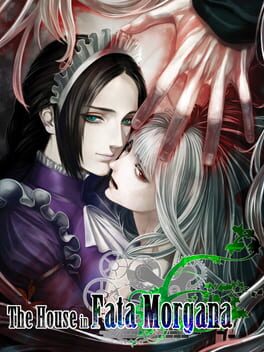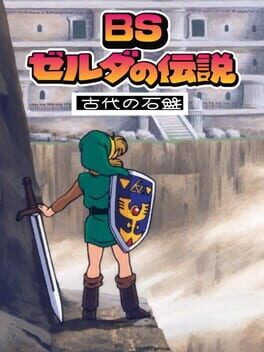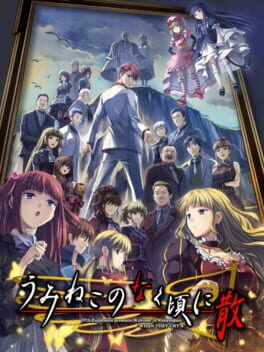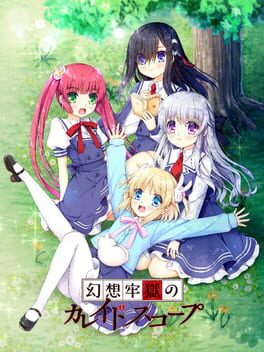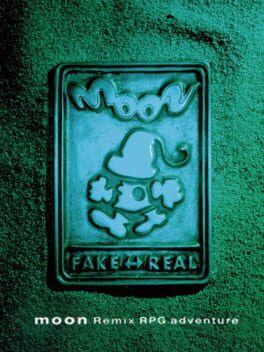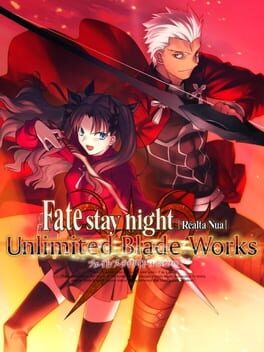guiltyparty
2023
In an era where most companies play around with the definition of the word "remake," for better or for worse, Mario RPG in 2023 brings an excessively faithful repackaging with scant upgrades. If you played the 1996 iteration of this game, you know exactly what you're getting into here, just about down to the letter...minus the lovable SNES grit.
Make no mistake, this is the same game, with all of the same pluses. As far as what's new, it's got some great new arrangements by Shimomura and a fresh coat of paint that stays fairly in line with the original's peculiar ideas, nothing controversial. That said, there are odd bits in the presentation that stick out like a sore thumb. Menus are not only bland to look at but also suffer from framerate issues; the pre-rendered cutscenes, inexplicably, also sport some noticeable stutter. Save blocks are highly prevalent, even though the game now auto-saves every time you move between loading zones. There's no sound effect at all for advancing dialogue, where the addition of the bleeps and bloops that later Mario RPGs use for text might have added a splash of flavor. The translation is mostly intact, with few changes — but I suppose Generation Z may not be too familiar with the late 50's hit "Mack the Knife," despite how groan-inducing the name Claymorton is. Maybe they don't know who Bruce Lee is, either, but that one's a little up in the air.
As for changes on the gameplay side, party members can be switched out at any time without wasting a turn a la Paper Mario's Quick Change. A healer can stay on the bench and pop out only when they're needed, providing an incredibly safe option in a pinch. A clear prompt makes the timing of your action command difficult to miss, and hitting it perfectly now results in splash damage that hits all enemies on the field. On the defensive end, a well-timed button press also blocks damage completely, and the window for this is fairly lenient. Action commands also fill up a gauge that leads to a large cinematic attack with varying effects depending on your party lineup.
This is a new quirk of the battle system that can feel satisfying in big fights (until you start skipping the cutscene), but this game clearly was not rebalanced around it. Encounters with run-of-the mill enemies end just as quickly as they start, and bosses tend to fall very unceremoniously as well. One notable boss is surrounded by adds in the original game, and will force Mario into a potentially tricky 1v1 if you get rid of all of them — the optimal strategy is to leave one minion active on the field throughout the fight, to keep the rest of your party around. It's difficult to implement this strategy in the remake without intentionally scuffing your action commands, but even if you get into that solo fight, there's little to fear: you're hitting harder than before, and taking less (or no) damage, making for a less rewarding finish.
Platforming is probably my least favorite part of the original game due to the deceptive depth of some of the setpieces, and it's not improved at all in this iteration. I probably spent more time than anything else trying to quickly climb up shells in Land's End to nab the Troopa Pin — and then, so shortly after that, navigating beanstalks and figuring out exactly where on the Z-axis the game wanted me to be. Call it a skill issue, but it's nonetheless frustrating.
All that being said, this is a perfectly acceptable way for a first-timer to play through this classic, and an exceedingly serviceable way for a fan of the game to revisit it — but if you're looking for more substance than a clean reskin and a few QOL additions, you might not be so keen to drop $60 for ten-to-twelve hours down memory lane.
Make no mistake, this is the same game, with all of the same pluses. As far as what's new, it's got some great new arrangements by Shimomura and a fresh coat of paint that stays fairly in line with the original's peculiar ideas, nothing controversial. That said, there are odd bits in the presentation that stick out like a sore thumb. Menus are not only bland to look at but also suffer from framerate issues; the pre-rendered cutscenes, inexplicably, also sport some noticeable stutter. Save blocks are highly prevalent, even though the game now auto-saves every time you move between loading zones. There's no sound effect at all for advancing dialogue, where the addition of the bleeps and bloops that later Mario RPGs use for text might have added a splash of flavor. The translation is mostly intact, with few changes — but I suppose Generation Z may not be too familiar with the late 50's hit "Mack the Knife," despite how groan-inducing the name Claymorton is. Maybe they don't know who Bruce Lee is, either, but that one's a little up in the air.
As for changes on the gameplay side, party members can be switched out at any time without wasting a turn a la Paper Mario's Quick Change. A healer can stay on the bench and pop out only when they're needed, providing an incredibly safe option in a pinch. A clear prompt makes the timing of your action command difficult to miss, and hitting it perfectly now results in splash damage that hits all enemies on the field. On the defensive end, a well-timed button press also blocks damage completely, and the window for this is fairly lenient. Action commands also fill up a gauge that leads to a large cinematic attack with varying effects depending on your party lineup.
This is a new quirk of the battle system that can feel satisfying in big fights (until you start skipping the cutscene), but this game clearly was not rebalanced around it. Encounters with run-of-the mill enemies end just as quickly as they start, and bosses tend to fall very unceremoniously as well. One notable boss is surrounded by adds in the original game, and will force Mario into a potentially tricky 1v1 if you get rid of all of them — the optimal strategy is to leave one minion active on the field throughout the fight, to keep the rest of your party around. It's difficult to implement this strategy in the remake without intentionally scuffing your action commands, but even if you get into that solo fight, there's little to fear: you're hitting harder than before, and taking less (or no) damage, making for a less rewarding finish.
Platforming is probably my least favorite part of the original game due to the deceptive depth of some of the setpieces, and it's not improved at all in this iteration. I probably spent more time than anything else trying to quickly climb up shells in Land's End to nab the Troopa Pin — and then, so shortly after that, navigating beanstalks and figuring out exactly where on the Z-axis the game wanted me to be. Call it a skill issue, but it's nonetheless frustrating.
All that being said, this is a perfectly acceptable way for a first-timer to play through this classic, and an exceedingly serviceable way for a fan of the game to revisit it — but if you're looking for more substance than a clean reskin and a few QOL additions, you might not be so keen to drop $60 for ten-to-twelve hours down memory lane.
2023
I can't overstate how humbling it is when strangers find your character charming enough to pop them into cute outfits. The game is clearly aware of this, too: it makes such a production out of getting Lookit Mail that opening one is a guaranteed serotonin boost. In a similar vein, it's extremely satisfying to work some color-coordination magic with another player's Muse. Going off their preferences and accessorizing properly will shower you in huge bonuses and stars galore, which is an undeniable rush. There's a clever sort of open-ended puzzle aspect to this game — and knowing that your unique solution will make someone on the other end of the screen smile really sweetens the solve.
Sadly, it's hard to get that same satisfaction from dressing up the NPCs spattered in the overworld, and the menuing itself is finicky — a notable problem, given how much time you spend in menus. It's frustrating that there's no way to save previously-worn outfits, or sort any of your clothing beyond extremely general categories of tops, bottoms, onepieces, etc. This becomes especially burdensome as your inventory becomes inundated with (literally) thousands of items — which happens much faster than you might think.
As much as the style pops, the setting itself is pretty barren, and lacks any significant way to interact with it. It's just a space for you to walk around, gather clothes, and dress people up, but there's not much to do even as you unlock more Cocoons. Progression is a bit haphazard without a dedicated campaign, and the fatigue doesn't take too long to set in.
At the end of the day, the social aspect is what really lifts Fashion Dreamer up and sets it apart from its predecessors. That being said, without some significant content additions and major QOL changes, that probably isn't enough to carry it long-term.
Sadly, it's hard to get that same satisfaction from dressing up the NPCs spattered in the overworld, and the menuing itself is finicky — a notable problem, given how much time you spend in menus. It's frustrating that there's no way to save previously-worn outfits, or sort any of your clothing beyond extremely general categories of tops, bottoms, onepieces, etc. This becomes especially burdensome as your inventory becomes inundated with (literally) thousands of items — which happens much faster than you might think.
As much as the style pops, the setting itself is pretty barren, and lacks any significant way to interact with it. It's just a space for you to walk around, gather clothes, and dress people up, but there's not much to do even as you unlock more Cocoons. Progression is a bit haphazard without a dedicated campaign, and the fatigue doesn't take too long to set in.
At the end of the day, the social aspect is what really lifts Fashion Dreamer up and sets it apart from its predecessors. That being said, without some significant content additions and major QOL changes, that probably isn't enough to carry it long-term.
2023
Unfortunate that SEGA is asking $60 for a WiiWare-quality title, but here we are.
The gameplay of this one is a real mixed bag. The stages are typically serviceable, if fairly uninspired on their face. More often than not, they feel the need to throw a gimmick at you in their second act, just to make sure you're not falling asleep at the wheel. The jungle zone is hidden by a fog of war that narrows your view, the factory stage has a self-destruct timer in the background that needs to be reset by hitting certain switches — hindrances that discourage you from seamlessly coasting along the best path, while disincentivizing taking your time exploring wide areas. Overall, this is a tough balancing act to pull off, and Superstars rarely handles it with grace.
Thankfully, giant rings aren't too tricky to track down this time around, in part because the game wants you to play around with the powers you get for clearing special stages. Those stages themselves are among the franchise's jankiest (particularly the fifth one), but they're generally inoffensive. These new powers are situationally useful at best and actively intrusive at worst, especially on the Switch, where they're liable to tank the FPS. More likely than not, you'll find an ability you like and forget that you have it until you're in an annoying spot — or, maybe you'll grab the water ability, only to find that it has little use outside of Lagoon City. Mileage varies.
There are also four unique stages that force you to play as each cast member. While these seem tailored towards their character's platforming on paper, they often don't do enough to lean into what makes their movement options unique — Knuckles's stage puts too much emphasis on scaling walls, and not enough emphasis on his glide. You get the sense that with the emerald abilities, any of the characters would be able to clear these stages (and to an extent, this is proven post-credits). The addition of a playable Amy is welcome, and her double jump is immensely practical, both in navigating frustrating bits of verticality and, occasionally, in skipping segments where other characters would be unable to hit a boss.
On the topic of bosses, they're extended waiting games. Far too often, they hang in the background or just out of reach, looking for you to take advantage of a short window where you hit a blue projectile back, only to make you wait for them to take the shot again. These are exercises in tedium, and the emerald abilities don't do enough to quicken the pace.
Music is another dud, which is a real shame, because there are some competent compositions here; they're often just obscured by that weird Sonic 4/"classic Sonic" soundfont they insist on using for these 2D entries. Tee Lopes and Jun Senoue have both made some decent songs for this game, which would sound much better if they weren't held back by god-awful instrumentation. The real crime, however, is the sound direction. Enemy lasers are ear-splitting, Sonic jumps out of water with an obnoxious crash, and turning down the volume of the sound effects does little to remedy the mixing. Not sure what they thought they were cooking up here.
Once you clear the eleven zones in the main campaign, you unlock a new one with a fifth character — think the Sonic & Knuckles approach, where the acts and bosses change ever so slightly to accommodate a different playstyle. Unlike Sonic & Knuckles, the true final boss is locked behind this second campaign. Be prepared to play through twice if you want to see everything.
But to end on a positive note, at least you get to play Fantasy Zone twice. That's worth half a star alone.
The gameplay of this one is a real mixed bag. The stages are typically serviceable, if fairly uninspired on their face. More often than not, they feel the need to throw a gimmick at you in their second act, just to make sure you're not falling asleep at the wheel. The jungle zone is hidden by a fog of war that narrows your view, the factory stage has a self-destruct timer in the background that needs to be reset by hitting certain switches — hindrances that discourage you from seamlessly coasting along the best path, while disincentivizing taking your time exploring wide areas. Overall, this is a tough balancing act to pull off, and Superstars rarely handles it with grace.
Thankfully, giant rings aren't too tricky to track down this time around, in part because the game wants you to play around with the powers you get for clearing special stages. Those stages themselves are among the franchise's jankiest (particularly the fifth one), but they're generally inoffensive. These new powers are situationally useful at best and actively intrusive at worst, especially on the Switch, where they're liable to tank the FPS. More likely than not, you'll find an ability you like and forget that you have it until you're in an annoying spot — or, maybe you'll grab the water ability, only to find that it has little use outside of Lagoon City. Mileage varies.
There are also four unique stages that force you to play as each cast member. While these seem tailored towards their character's platforming on paper, they often don't do enough to lean into what makes their movement options unique — Knuckles's stage puts too much emphasis on scaling walls, and not enough emphasis on his glide. You get the sense that with the emerald abilities, any of the characters would be able to clear these stages (and to an extent, this is proven post-credits). The addition of a playable Amy is welcome, and her double jump is immensely practical, both in navigating frustrating bits of verticality and, occasionally, in skipping segments where other characters would be unable to hit a boss.
On the topic of bosses, they're extended waiting games. Far too often, they hang in the background or just out of reach, looking for you to take advantage of a short window where you hit a blue projectile back, only to make you wait for them to take the shot again. These are exercises in tedium, and the emerald abilities don't do enough to quicken the pace.
Music is another dud, which is a real shame, because there are some competent compositions here; they're often just obscured by that weird Sonic 4/"classic Sonic" soundfont they insist on using for these 2D entries. Tee Lopes and Jun Senoue have both made some decent songs for this game, which would sound much better if they weren't held back by god-awful instrumentation. The real crime, however, is the sound direction. Enemy lasers are ear-splitting, Sonic jumps out of water with an obnoxious crash, and turning down the volume of the sound effects does little to remedy the mixing. Not sure what they thought they were cooking up here.
Once you clear the eleven zones in the main campaign, you unlock a new one with a fifth character — think the Sonic & Knuckles approach, where the acts and bosses change ever so slightly to accommodate a different playstyle. Unlike Sonic & Knuckles, the true final boss is locked behind this second campaign. Be prepared to play through twice if you want to see everything.
But to end on a positive note, at least you get to play Fantasy Zone twice. That's worth half a star alone.
While it leads to a few pacing hiccups that can impact the immersion, the audio drama/game hybrid model is an interesting concept, opening up several opportunities to muck around Link to the Past's overworld and hunt for time-based events. Perhaps the biggest perk comes in the form of its high-quality soundtrack: the remade music here is killer, even if the tracks can't sync to your location. None of the hour-long four episodes are especially challenging - there's nothing that will keep anyone stumped for very long, for the sake of ensuring that the main quest is completed within the time limit. It's a nifty piece of Zelda history, though, especially if you're a fan of LttP.
2021
Dread is an astoundingly tight package, sporting snappy movement options (in a map that allows you to take full advantage of them) and a dynamic combat system that builds well upon the mechanics of the previous entry, Samus Returns. While the survival-horror element creates an interesting cat-and-mouse between Samus and the E.M.M.I. units, the structure of the zones encourages a response that's more reactionary than tactical, which often makes these encounters more tedious than tense.
2022
2019
While it does little to rectify the thematic hiccups of the original game, The Royal builds nicely on its stylish base, with some nifty quality-of-life changes and overhauled combat. A sublime experience for those who haven't played the original, but if you've already put your 100 hours into the vanilla version, sinking your teeth into this one for the lean third semester alone might be a tough sell. Still, it's every bit the aesthetic marvel of the 2016 hit, and an objective improvement upon a benchmark in the genre.

